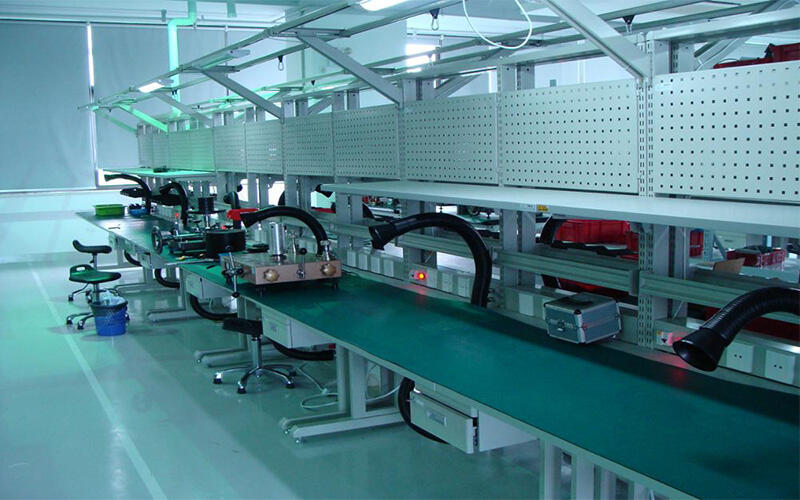The product of Electrostatic Discharge (ESD) workbenches unit with factory automation systems plays an essential role to boost operational efficiency and maintain safety regulations in modern industrial environments. The integration serves as an essential element to preserve outstanding production quality in electronics production because it enables ESD damage prevention. The following article explains the essential components of ESD workbench-system integration alongside robotic operational support combined with conveyor-related specifications and Internet-connected sensor functions for predictive maintenance purposes.
Robotics and Conveyor Belt Compatibility
Factory automation becomes more complex when robotic systems and conveyor belts are incorporated into the integration process of ESD workbenches. Robotics contributes to two primary advantages in manufacturing which includes enhanced operational efficiency along with precise work execution such as sorting together with component assembly and their movement. Robotics systems that handle ESD-sensitive devices in their operation areas must follow ESD control procedures to eliminate potential dangers.
Factory automation requires conveyor belts to be built with ESD protection features as their essential part. Static electricity levels can become substantial because components and trays move through conveyor belts. Anti-static belts should be installed with grounding systems on conveyor systems to prevent the formation of static electricity. Manufacturers must position ESD workbenches accurately within conveyor lines and provide grounding points for staff members and systems operating on them.
Automation of systems must be planned carefully through selection of materials which resist static accumulation to achieve proper compatibility with ESD workbenches. Another critical measure entails the installation of continuous monitoring systems capable of checking ESD levels across all production workflow areas. The system monitors static electricity live to adapt dynamically to situations when static levels increase thus protecting delicate components from harm.
IoT Sensors for Predictive Maintenance
The installation of IoT (Internet of Things) sensors represents a leading advancement in factory automation when used for predictive maintenance purposes. The combination of high-tech monitoring systems within predictive maintenance allows foreknowledge about system failure times to avoid unplanned shutdowns and improve maintenance efficiency.
IoT sensors fulfill essential duties to operate ESD workbenches. These sensors provide continuous observation of humidity control and temperature measurement and static electricity level assessment. The prevention of ESD depends intensely on humidity control because low humidity conditions intensify the risk of static charges discharging. The real-time monitoring and regulation of conditions helps factories preserve perfect conditions for their ESD-sensitive operations.
Networked sensors monitor the condition and efficiency of grounding straps and ESD protection mats and other such equipment as an essential component of ESD prevention. The components wear down with time until they fail to function successfully. ESD protective equipment will automatically notify maintenance staff through IoT sensors about equipment replacement requirements as well as reduced grounding performance quality.
The combination of ESD workbenches with IoT sensors collects useful data that experts can utilize for process enhancement. Through statistical analysis of data collection manufacturers can detect emerging problems which might cause equipment failure along with manufacturing defects. Factory installations of machine learning algorithms enable the development of predictive models which predict ESD challenges then they automatically adjust environmental controls or enable automated preventive protocols.
Conclusion
Multiple technical elements need detailed coordination for the successful integration of ESD workbenches with automated factory equipment. The prevention of sensitive electronic component damage comes from robotics and conveyor belt compatibility with established ESD safety standards. Professional maintenance uses IoT sensors to enhance this integration since they deliver instant data monitoring and predictive results for sustaining optimal manufacturing environment conditions.
As technology develops, the synergy between ESD control and factory automation will only be strong, which will lead to smart, more efficient manufacturing environment. Through adopting careful planning and advanced monitoring systems, factory can achieve high level productivity, protecting against the risks associated with electrostatic discharge.







